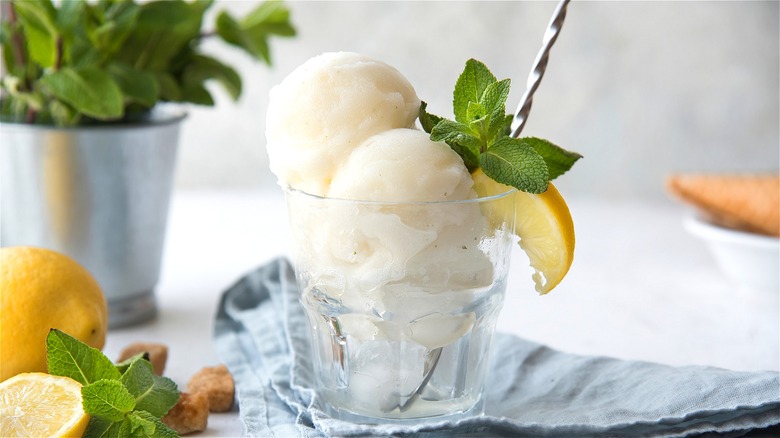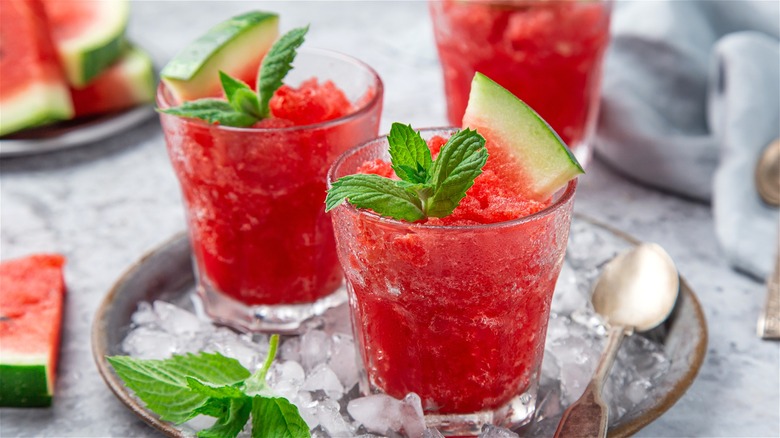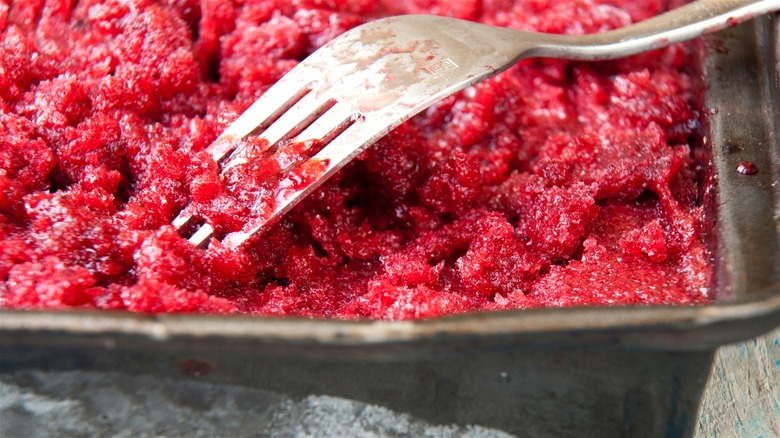What Exactly Is Italian Ice?
Hot, long summer months are often made more manageable thanks to air conditioning, cool showers, and, most importantly, frozen confections. While you could enjoy a scoop of your favorite ice cream or even build the ultimate summer popsicle, you might be itching to shake things up and try making a refreshing treat that includes a generous serving of ice and your favorite fresh fruit.
Unlike snow cones, which are made using large flakes of ice and flavored syrup, or sherbet, which is made using a combination of fruit, sugar, and milk, Italian ice is made with just a few essential ingredients. Most Italian ice recipes include a simple mix of your favorite fruit, sugar or honey, ice, and citrus juice. The preparation process makes Italian ice distinct; the ingredients are blended until smooth and scraped with a fork or spoon as the mixture slowly sets in your freezer. This assures smooth and creamy scoops of one refreshing treat without added dairy. The most surprising element of Italian ice is that this seemingly authentic treat was actually birthed in America. Before sharing some important tips to remember when making your own Italian ice at home, let's get into the history of this frozen treat and how it was first inspired by one traditional Italian treat.
The history and variations of Italian ice in America
You might be shocked to learn that Italian ice was birthed by one Italian family in New Jersey in the mid-1900s. However, the drive to make such a dessert was inspired by the family's longing for Sicilian granita, a similar icy-based confection composed of water, sweetener, fruit, and citrus juice. Unlike ice cream, granita is essentially blended and sweetened fruit frozen and scraped into a consistency similar to shaved ice. When thinking about the last time you made a pan of frozen sweet and sour cherry granita, you may wonder how this icy snack differs from Italian ice.
Even though traditional granita and Italian ice are typically made with the same ingredients, some claim granita toutes larger ice crystals, and Italian ice is smoother overall. Many of the textural differences in Italian ice varieties become clear depending on the locations purchased across the country. While New York shops offer blended and even slow-churned, easily scoopable types of this icy treat, cities like Philadephia offer Italian ice with a more pronounced liquid-based consistency. What makes these distinctions even harder to decipher is that there isn't just one specific way to make traditional Italian ice.
How to make your own Italian ice
Out of all the frozen fruit recipes available, Italian ice might be one of the simplest and most accessible treats to make when you're craving something icy and sweet. Even though there's more than one way to make this frozen snack, the most common preparation method involves blending a mixture of ice, fresh fruit, honey, and lemon juice. Conversely, granita is traditionally made without added ice but with water to form fruity ice crystals. To make Italian ice, start by blending all the suggested ingredients. After an extra cup of ice is added and mixed until smooth, pour the mixture into a baking pan and freeze for half an hour until the liquid begins to solidify. Once stirred with a spoon or fork, allow the ice to firm up for another few hours until it's time to scoop and enjoy.
While most fruit varieties work well in homemade Italian ice, you may want to lean toward choosing fruits that pair well with citrus flavors to create delicious combinations like lemon strawberry and blackberry lime. Also, since granita is often served with a topping or two for added complexity, feel free to adorn your homemade Italian ice with tasty extras like crushed nuts, flaked coconut, or chocolate sauce. Whether you make a more firm or slush-like version of this Sicilian-inspired treat, Italian ice is a delicious and easy way to beat the summer's heat.


